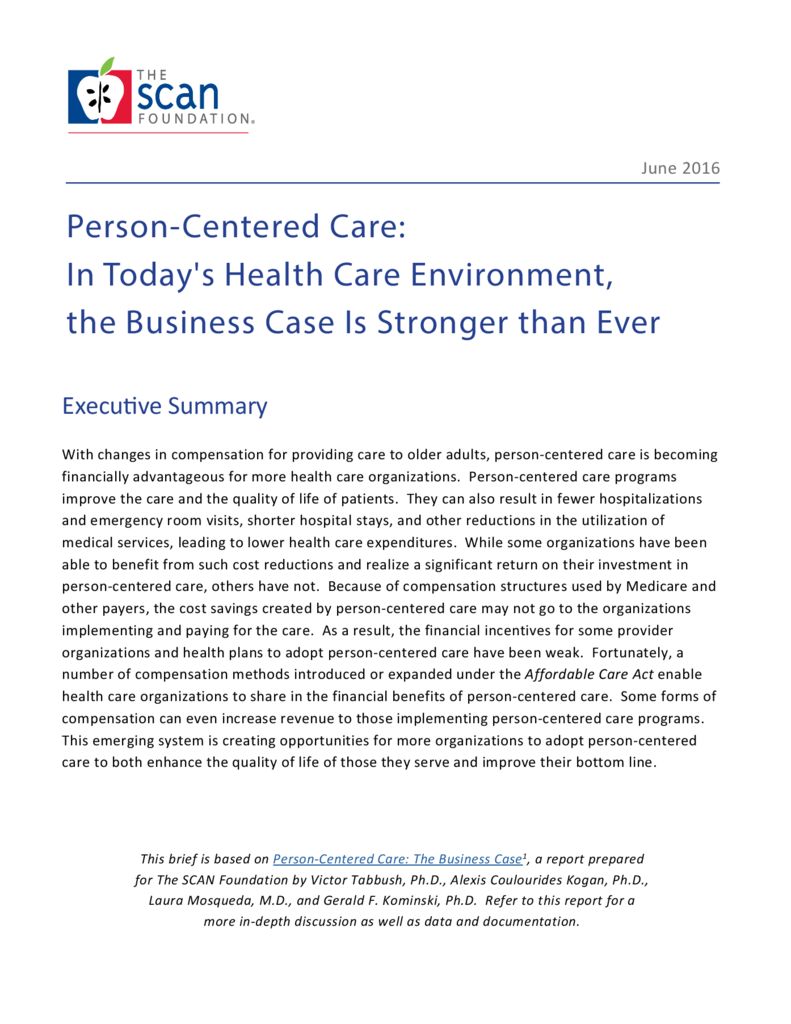Person-Centered Care: In Today’s Health Care Environment, the Business Case is Stronger than Ever (Issue Brief)
summary
Person-centered care works for older adults with chronic health conditions and daily living needs, but how does it apply to health care organizations? Is it financially sustainable? Is there a return on investment? This issue brief, based on a full report – Person-Centered Care: The Business Case – shows how person-centered care can result in fewer hospitalizations and emergency room visits while increasing one’s quality of life.
Date Updated: 06/20/2016Executive Summary
With changes in compensation for providing care to older adults, person-centered care is becoming financially advantageous for more health care organizations. Person-centered care programs
improve the care and the quality of life of patients. They can also result in fewer hospitalizations and emergency room visits, shorter hospital stays, and other reductions in the utilization of medical services, leading to lower health care expenditures. While some organizations have been able to benefit from such cost reductions and realize a significant return on their investment in
person-centered care, others have not…
Download the publication for all visuals and complete references.
Continue Reading
This policy brief establishes a basis for the critical system transformation activities necessary to produce a high quality, person-centered system of care for older adults and people with disabilities.
In this paper, the National Committee for Quality Assurance (NCQA) discusses prior integration efforts; introduces a model for integrated entities and a framework for assessing and promoting quality of integrated care; and explores the challenges to implementing and achieving the goals of person-centered, integrated care for Medicare-Medicaid beneficiaries. They use the word “framework” to describe the key concepts underlying the structure and process measures; it can also be expanded to include the content of performance measures as companions to the structure and process measures.
People tend to be very satisfied with their long-term care providers when they start their care, but satisfaction decreases over time.


